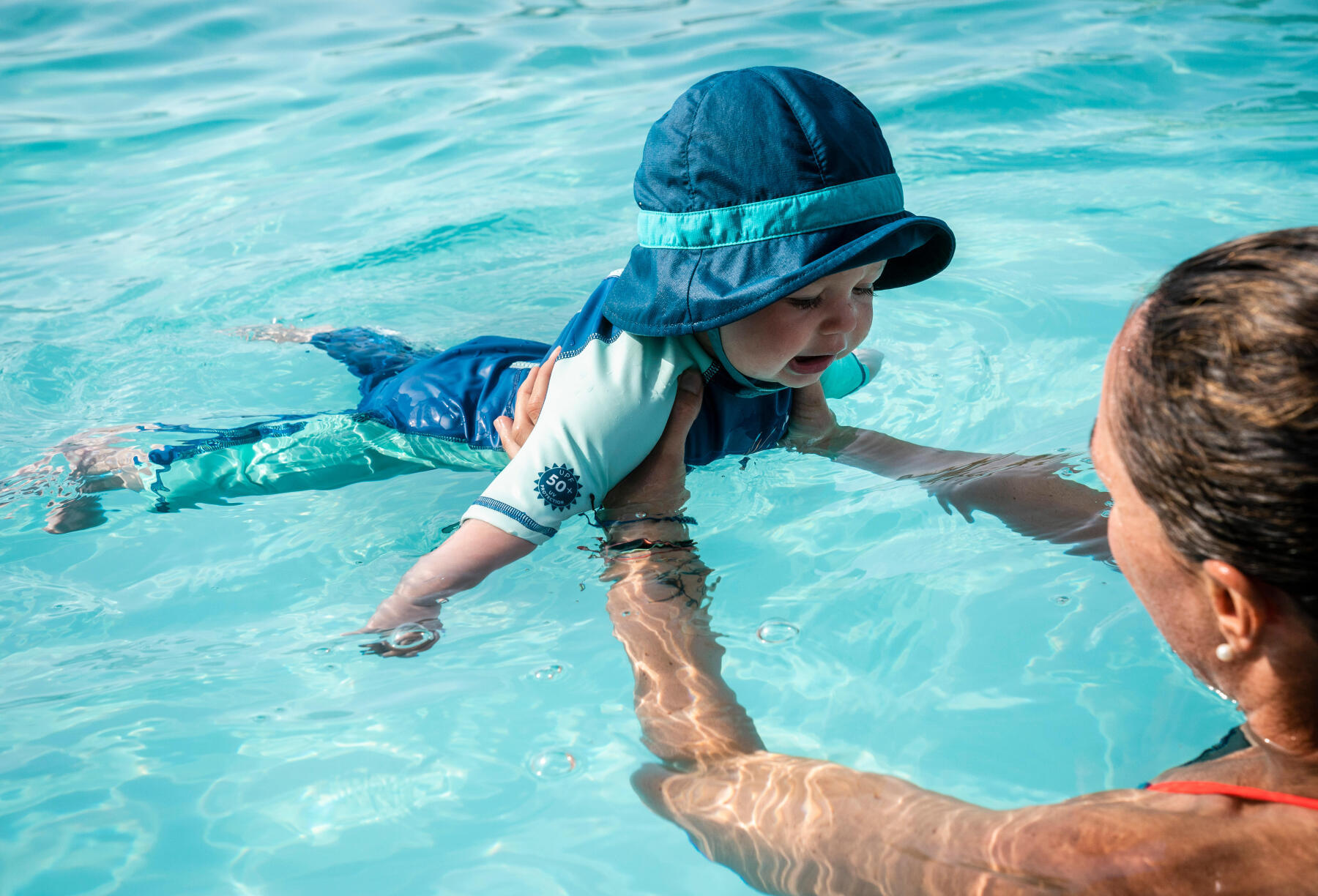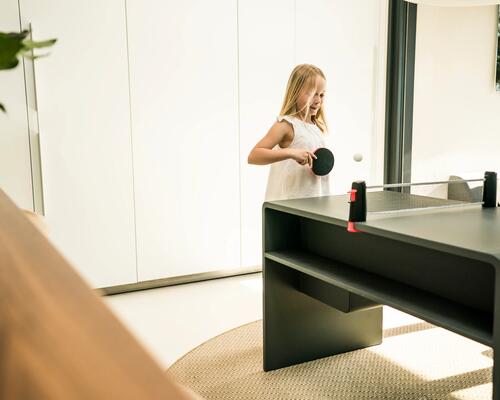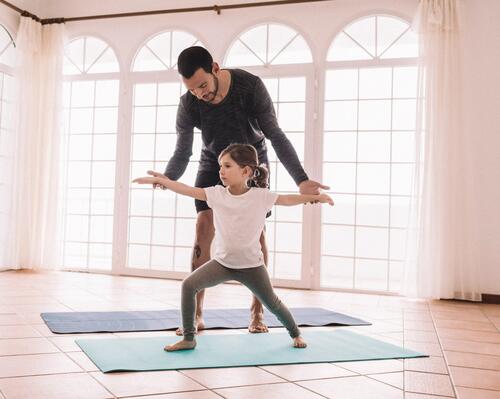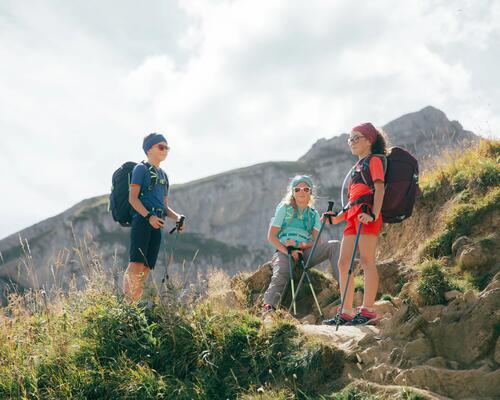Go with the flow
Thanks to bath time, your child’s first exploration of water has already begun! Continue to build on this positive relationship by learning through play.
Lead by example. Kids thrive with eye contact, praise, and smiles! While some kids are thrilled by water, others may be overwhelmed or afraid of the unknown environment. Take it slow and pay attention to your child’s comfort levels.
Tip: Babies love routine (so do adults!), so gradually increase the amount of water in the tub until they are comfortable lying on their back with their ears submerged.






